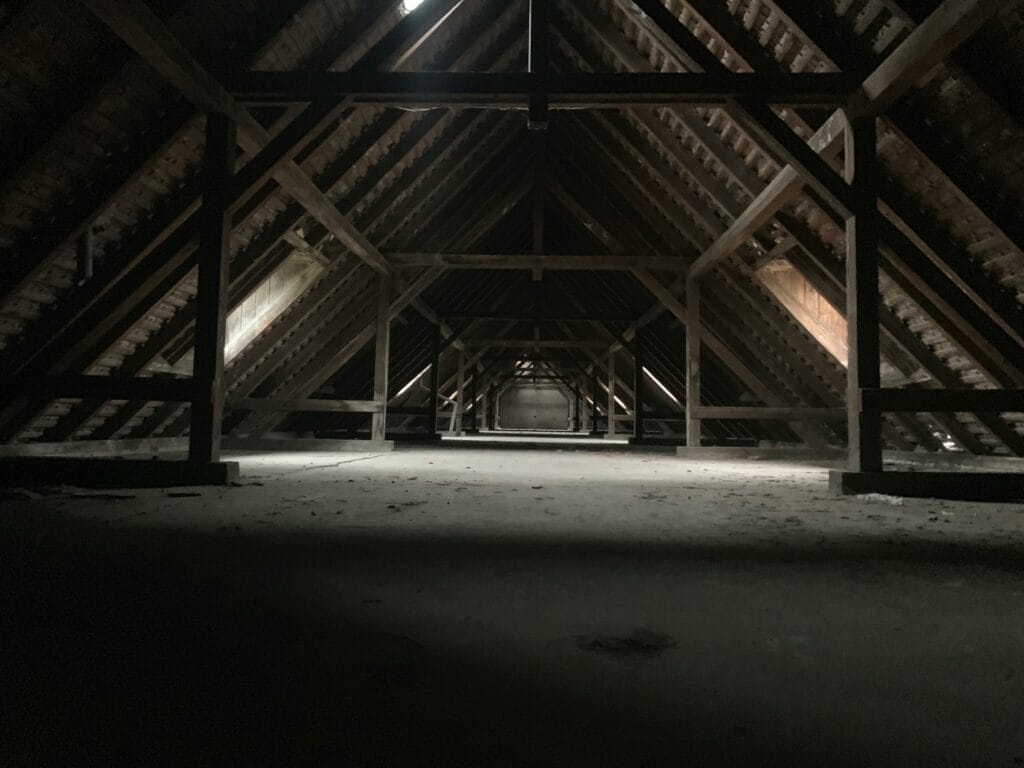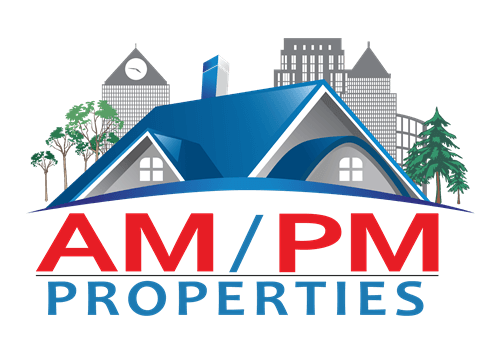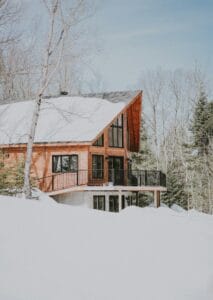If you’ve ever noticed water stains on your ceiling in the winter, your first thought might be: “My roof is leaking.” But in many Alberta homes, especially during cold snaps, the culprit isn’t a faulty roof — it’s something called attic rain.
What Is Attic Rain?
“Attic rain” happens when warm, moist indoor air leaks into a cold attic space. Once that warm air hits cold surfaces like roof sheathing, nails, or rafters, the moisture condenses and often freezes into frost. When the weather warms up, all that frost melts at once — dripping down into insulation, light fixtures, or drywall. It can look and feel like a roof leak, but it’s actually an internal condensation problem.
The Alberta Allied Roofing Association (AARA) explains it this way: warm air can hold more moisture than cold air. When warm, moisture-laden air enters a colder space like your attic, the excess moisture “falls out” of the air, forming frost or droplets. Later, as temperatures rise, that frost melts, leading to water stains or drips.
Why Attic Rain Happens
Attic rain usually develops because of a mix of issues inside the home:
- Poor attic ventilation – Without enough airflow, trapped moisture condenses and freezes.
- Gaps in the vapour barrier – Warm air sneaks through ceiling penetrations (light fixtures, pot lights, fans, attic hatches).
- Insufficient insulation – Thin or poorly installed insulation lets too much heat escape into the attic.
- High indoor humidity – Showers, cooking, laundry, and humidifiers increase moisture levels.
- Temperature swings – A warm spell after a deep freeze melts accumulated frost all at once.
Even features like bathroom or kitchen exhaust fans and skylights are common condensation hotspots. Fan ducts often collect frost during cold spells; when it warms up, they drip around ceiling vents. Skylights, with their metal and glass surfaces, naturally attract condensation in humid bathrooms.

Signs of Attic Rain
Watch for these common warning signs:
- Frost buildup on the underside of roof sheathing or protruding nails
- Wet or compacted attic insulation
- Stains on ceilings, often around light fixtures
- Drips appearing during warm spells after a cold snap
- Musty smells or mold growth in the attic
If leaks appear in winter during a thaw, they’re far more likely to be condensation-related. If leaks appear in summer during rain, it’s probably a true roof leak.
Why It’s a Problem
Left untreated, attic rain can lead to:
- Mold and mildew growth that affects indoor air quality
- Water damage to ceilings, walls, and light fixtures
- Reduced insulation performance, driving up heating costs
- Structural damage to roof sheathing and framing over time
How to Prevent Attic Rain
Seal Air Leaks
Close gaps in vapour barriers, attic hatches, and around electrical boxes. Spray foam or caulking can stop warm air from escaping upward.
Improve Ventilation
Your attic needs balanced airflow — intake at soffits and exhaust at roof vents. AARA recommends 1 sq. ft. of ventilation for every 300 sq. ft. of ceiling area, with proper soffit-to-roof vent balance.
- Upgrade Insulation
Ensure at least R-32 insulation in ceilings, while keeping soffit vents clear with baffles. Replace any insulation that’s wet or damaged.
- Manage Indoor Humidity
Run bathroom and kitchen fans 15 minutes after use. Use a dehumidifier if needed, and don’t overuse humidifiers in winter.
- Inspect Regularly
Check your attic during cold snaps and thaws. Spotting frost or wet insulation early can prevent costly damage.
How AM PM Properties Can Help
Managing attic rain isn’t always straightforward. That’s where our team comes in:
- Seasonal inspections to spot condensation before it causes damage
- Vendor coordination with roofers, insulators, and building envelope specialists
- Tenant education on using fans, managing humidity, and preventing moisture problems
- Repairs and upgrades to insulation, ventilation, and vapour barriers
- Ongoing monitoring through property management visits and maintenance reports
Attic rain may look like a roof leak, but it’s really a condensation issue — and it’s surprisingly common in Alberta homes. The good news? With the right prevention (ventilation, insulation, sealing, and humidity control), you can protect your home and avoid costly repairs.
At AM PM Properties, we help homeowners and landlords keep their properties safe from hidden problems like attic rain. From inspections to contractor coordination, we make sure your property is ready for Alberta’s harsh winters.
Need expert help with your rental property? Contact AM PM Properties — Calgary’s trusted property management team. Phone: (587)832-5000 | Email: info@ampmproperties.ca | www.ampmproperties.ca


